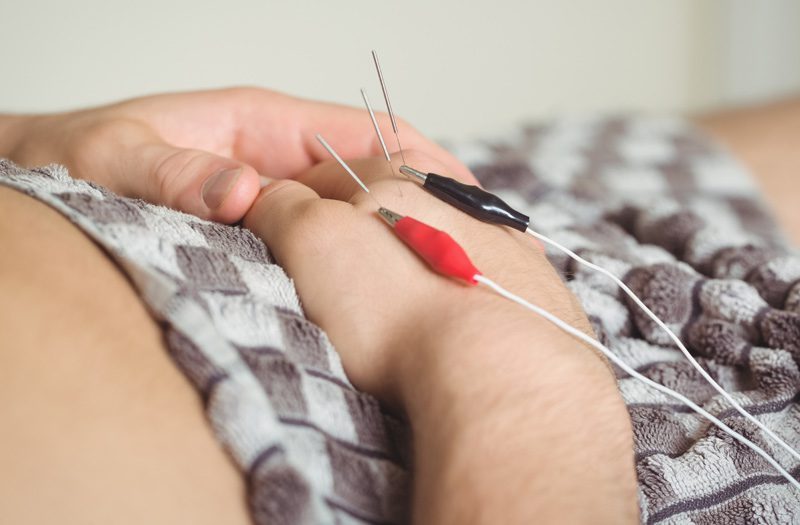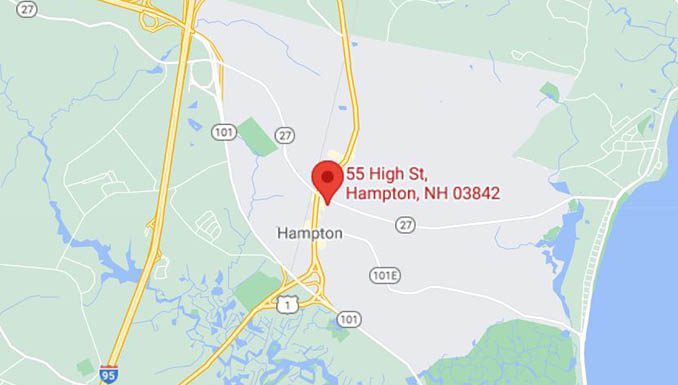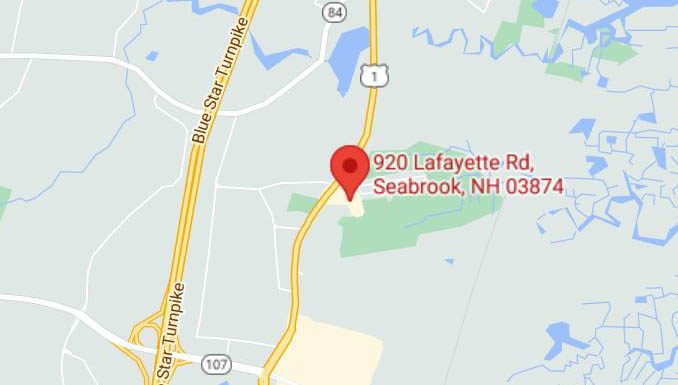Dr. Katherine Thibault, DPT ~ 
Dry Needling. It sounds scary and a little intimidating. You may have heard of it and are wondering what it all entails and if you would benefit from it. Dry needling (DN) is a treatment option a DN certified Physical Therapist can perform for a wide range of musculoskeletal disorders. Although it sounds similar to acupuncture, DN and acupuncture have very different training and theory behind them. While acupuncture follows certain meridians for needle placement, DN places small monofilament needles at the exact location of pain. DN can target trigger points within muscles, as well as tendons and bone, if necessary, to improve pain levels and get you back to what you love to do!
DN first came to be in the 1940s after the use of “wet” needling in which corticosteroids, analgesics or saline are injected into muscles and trigger points for pain relief. Several years later, a study was performed which showed no major differences between injecting a substance into painful areas compared to “dry” needling in which no substance is injected. Since then, numerous studies were performed supporting the use of dry needling for musculoskeletal pain. DN is a much safer treatment as it omits the use of medication for pain control.

The main goal of DN is to treat the muscle tissue by decreasing trigger points and reducing pain and inflammation. What exactly is a trigger point you ask? A trigger point is a tight band of muscle fibers that can restrict range of motion and create pain/tenderness. Trigger points cause prolonged or poor contraction of the muscle fibers. They are no longer getting proper blood supply which inhibits the muscle from receiving the oxygen and nutrients it needs to return to its normal state. Additionally, nerves surrounding the trigger point become more sensitized causing the area to feel more sore and painful. Utilizing DN to treat trigger points helps to de-activate the trigger point, releasing the taught fibers. This allows for improved blood flow and can flush out the area to reduce tension. DN needling is also very beneficial for areas of chronic inflammation such as arthritic joints and tendinitis. DN will stimulate blood flow and many cells crucial to the healing progress to start the healing cascade. DN is typically not a stand-alone treatment so it is important to work with your physical therapist to address your other impairments that may be contributing to your pain.
There are several other conditions the therapists at Hampton Physical Therapy commonly treat with DN and have very good success, one being tendinopathies. Tendinopathy is the failed healing of a tendon, usually resulting in degeneration of collagen proteins. This condition presents with pain and a reduction in range of motion and flexibility. Tendinopathy typically results from overuse or sudden stress on a tendon. Several tendons susceptible to overuse include the achilles tendon, medial and lateral epicondyle tendons, rotator cuff tendons and the plantar fascia. The best type of DN to address tendinopathy associated pain is known as the pistoning technique. To perform this technique, the therapist will insert the needle and move the needle in an up and down motion, repeatedly hitting the targeted tissue. This will cause a disruption in the chronic degenerative process due to increased bleeding and production of cells necessary to promote healing. Other conditions we see major success with include headaches, rotator cuff pathologies and temporomandibular joint dysfunction. It can even be utilized to treat pain associated with osteoarthritis as certain chemical reactions occur during the needling process causing pain inhibition.

So, you’ve opted to try DN and are wondering exactly what to expect. If you are a new patient, your physical therapist will perform a detailed evaluation and identify your specific impairments. For the procedure, you will be placed in a comfortable position in which the therapist can easily access the location they will be dry needling. The area will be sterilized, and the therapist may palpate to feel for trigger points before carefully inserting the needles into the proper area. At times, the needles may be uncomfortable to insert but once in you shouldn’t continue to feel any lasting pain. Although it may sound even more intimidating, electrical stimulation will typically be hooked up to the needles. Once the electrical stimulation unit is on you will feel a comfortable pulsing sensation. The electrical stimulation is used to further promote increased blood flow and pain relief, enhancing the benefits of the needles. The whole procedure will last for about 10-30 minutes and the needles will then be removed. Immediately following, you may feel some generalized soreness to the area which typically resolves within 24 hours. It’s important to note not everyone is a candidate for DN. Those with needle phobias, metal allergies, clotting or bleeding disorders, pregnancy or lymphedema should avoid DN. DN is a great treatment option so if you would like to give it a try, please don’t hesitate to reach out to us here at Hampton Physical Therapy!
Citations
Dry Needling Institute. (2018). Dry Needling for Craniofacial, Cervicothoracic and Upper Extremity Conditions. Montgomery, AL: Dr James Dunning.https://www.footdoctorscolorado.com/library/dry-needling-targeting-your-trigger-points.cfm






